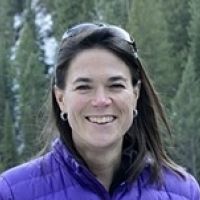Flerchinger et al., 2019
Water and carbon fluxes along an elevational gradient in a sagebrush ecosystem
Flerchinger, G.N., Fellows, A.W., Seyfried, M.S., Clark, P.E., and K.A. Lohse (2019)
Ecosystems
-
Reynolds, Sierra, INVESTIGATOR, COLLABORATOR
-
Reynolds, INVESTIGATOR
-
Reynolds, INVESTIGATOR
-
Reynolds, INVESTIGATOR
Abstract
Differences in water and carbon fluxes along a climate/elevation gradient within a sagebrush ecosystem are quantified, and inferences are made about climate warming using a network of eddy covariance systems. Sites are located within the Reynolds Creek Critical Zone Observatory in southwestern Idaho, USA, with elevations ranging from 1425 to 2111 m, annual precipitation ranging from 290 to 795 mm and annual temperature ranging from 9.1 to 5.4 °C. Annual gross ecosystem production (GEP) for the sites averaged (± uncertainty) 385 ± 6, 549 ± 19, 684 ± 25, and 818 ± 26 gC m−2 from lowest to highest elevation. Annual net ecosystem production indicated that the sites are carbon sinks with annual uptake typically ranging from 100 ± 10 to 200 ± 30 gC m−2. Exceptions to this are: the lowest elevation site which was carbon neutral (1 ± 16 gC m−2) during a year with a summer rainfall respiration pulse, and the highest elevation site, where carbon uptake dropped to 42 ± 20 gC m−2 during a heavy snow year. Carbon flux and evapotranspiration (ET) peaked about a month earlier at the lower elevation sites, but with limited precipitation, these sites encountered water stress for much of the growing season. Model simulations suggest that climate warming will likely have a negligible impact on annual ET and GEP at lower elevations, but rather shift ET and GEP earlier in the season and prolong the period of water stress. ET and GEP may increase with climate warming at higher elevations where precipitation is above a threshold of about 450 mm.
Citation
Flerchinger, G.N., Fellows, A.W., Seyfried, M.S., Clark, P.E., and K.A. Lohse (2019): Water and carbon fluxes along an elevational gradient in a sagebrush ecosystem. Ecosystems. DOI: 10.1007/s10021-019-00400-x
 This Paper/Book acknowledges NSF CZO grant support.
This Paper/Book acknowledges NSF CZO grant support.
Explore Further



